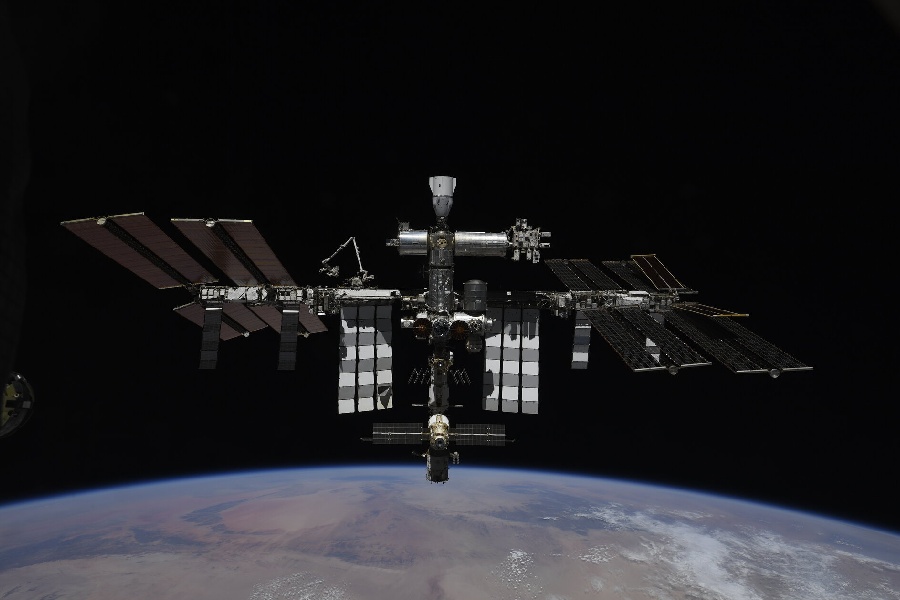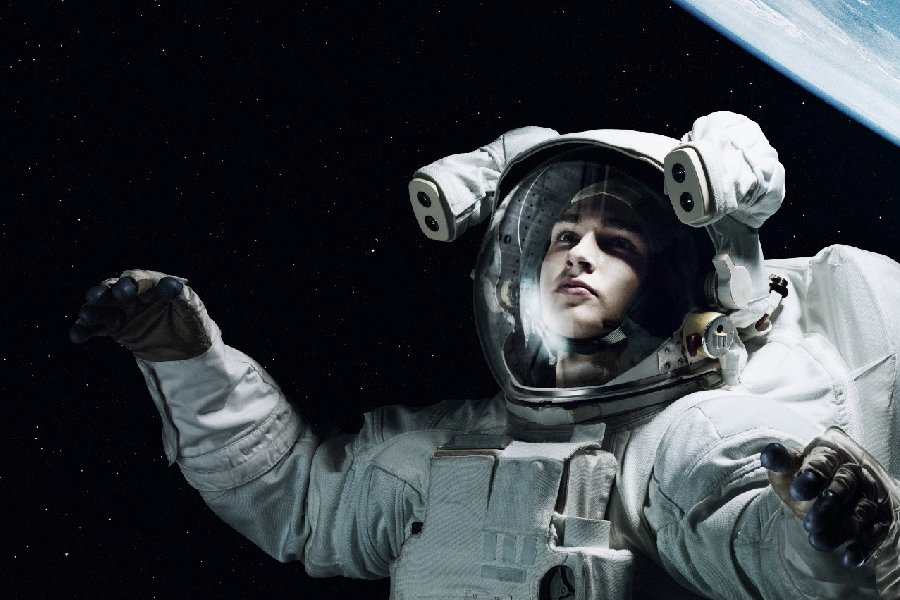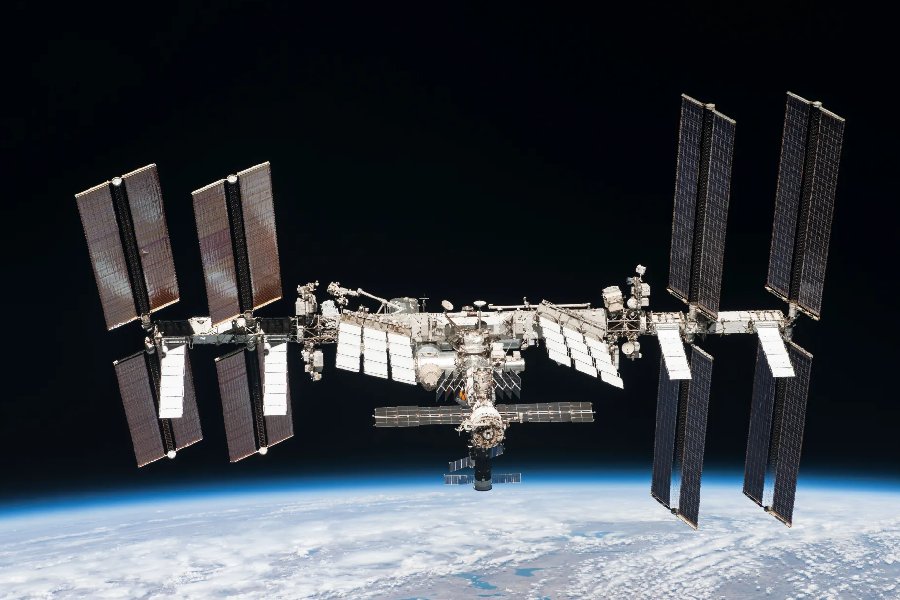The International Space Station (ISS) is one of humanity’s greatest science and engineering accomplishments in space. This football-field-sized structure orbits Earth while traveling at over 17,000 mph. But what exactly does the ISS do, and how does it work? What are some of the most interesting International Space Station facts?
This guide provides an insider’s look at the International Space Station technology humming 250 miles above Earth. We’ll dive deeper into the details and some fascinating facts, from the complex assembly process to the daily operations of life support systems.

Top International Space Station Facts
The International Space Station (ISS) is a pinnacle of global collaboration in space exploration. It represents a joint effort. This joint effort is by space agencies from the United States, Russia, Europe, Japan, and Canada.
Launched in 1998, the ISS serves as a modular orbital home, orbiting Earth at an average altitude of 420 kilometers (227 miles). This microgravity laboratory facilitates diverse scientific experiments across biology, physics, astronomy, and materials science.
Reasons for the Development of ISS
The ISS arose from motivations to create a long-term orbital outpost for conducting science and testing technologies requiring the microgravity environment of space. Experiments and hardware demos requiring sustained weeks or months of weightlessness cannot occur using brief shuttle or capsule trips.
Russia, Europe, Japan, Canada and the U.S. jointly funded the ISS for multiple reasons. These include developing expertise in human spaceflight logistics, studying space’s impacts on organisms, and prototyping satellite systems. They also include testing tools that enable future deep space exploration missions.
The return is considered groundwork at an estimated $100 billion construction cost. This groundwork supports humanity’s expansion into space. It does this through vital research and tech development.
So, over 2,600 experiments have been conducted aboard the ISS so far. The onboard microgravity lab continues catalyzing innovations benefitting life on Earth daily.
How Many Nations Participate in the ISS?
Major contributing partners
The International Space Station represents an unprecedented level of global teamwork in space across 15 nations. Key partners include the space agencies of the United States (NASA), Russia (Roscosmos), Europe (ESA), Japan (JAXA) and Canada (CSA).
Additional cooperative agreements expanded contributions from Italy to Britain and beyond. While NASA allocated over $100 billion as the majority funding source, Russia’s legacy spaceflight expertise and Europe’s technical assembly roles proved equally vital.
Interdependent space support
Components launched on Russian Proton rockets from Guiana Space Center and astronauts ferrying aboard Russian Soyuz capsules underscore interdependencies enabling station success.
This globally unified effort advances scientific discovery unbound by terrestrial disputes. The ISS reminds humanity that space exploration expands best through peaceful partnerships rather than individual national gain alone.
Crews and Residency Time
The ISS houses crews of three to six astronauts at any time. These crews rotating through expedition missions typically live around six months onboard. But Russian Valeri Polyakov holds the record at 437 straight days during one stay.
International cooperation is showcased by intermingled American and Russian resident crews working collaboratively on science and operations. ISS population peaks briefly when replacement crews overlap before adjusting back to normal. Also, complex choreography allows safe transitioning between incoming and outgoing crews utilizing Russian Soyuz crew ferry vehicles.
Astronauts Living Aboard the ISS
Daily life for ISS astronauts revolves around intensive science experiments, station maintenance, repairs, exercise, and personal care. Schedules sync across 24 zones as the ISS circles the Earth every 90 minutes.
Furthermore, logistical supplies must be meticulously tracked in the maze of modules. During off times, the Earth observation and photography from the cupola viewing bay uplift spirits.
While physically and mentally demanding over monthslong stays, astronauts describe seeing the Earth from above and gazing into boundless space as magical experiences. These magical experiences make adaptations worthwhile.

How Long Have Astronauts Lived in Space?
As of 2022, astronauts have accumulated over 257 years of space residency. Much of this accrued aboard the ISS in increments of expedition crew stays averaging six months.
A few astronauts completed three or more ISS expeditions over their careers, such as NASA’s Peggy Whitson, who logged over 665 days working aboard the station. Her endurance record highlights that select astronauts train their bodies and minds to adapt to space’s strains to push the boundaries of human space survival.
Knowledge gained about managing health and performance aids planning for future long-haul missions to destinations like Mars. Such missions may require 1,000+ day journeys far exceeding ISS experience.
Most Time Spent in Space by a Single Astronaut
Russian cosmonaut Gennady Padalka logs the total days lived in space at 879 days over five missions. His endurance highlights extensive Russian experience with long-duration spaceflight dating even to the Soviet-era Mir space station.
Padalka’s time spans ISS expeditions lasting up to 199 straight days, continually testing the human capacity to adapt. As commander of ISS Expedition 43 in 2015, he also set the standing record for most total spacewalks at 10.
His operational skill and scientific contributions affirm deep commitment amid the challenges of space pushing boundaries, enabling humanity’s expansion outward. Just as trails once blazed westward on Earth, the long cosmic trail Padalka marks guides those that will follow.
Most Experienced Female Astronaut on ISS
Female record-holder
As mentioned, Peggy Whitson, a NASA astronaut, has lived on board the space station for the most days—665, between three missions from 2002 to 2017. Her skills in conducting protein crystal growth experiments and installing crucial station hardware upgrades showcased outstanding U.S. technical abilities.
Equally, her endurance living for months in space helped NASA study the health effects of microgravity. This includes vision changes, bone density loss, and muscle atrophy – to aid in planning for future Mars missions. Beyond the scientific accomplishments, Whitson is an icon and role model motivating young women everywhere to pursue STEM careers previously viewed as unfeminine or inaccessible.
Most Experienced Male Astronaut on ISS
Male record-holder
Russian cosmonaut Gennady Padalka, with 879 total days logged in orbit, has spent the most time residing on the ISS over five expeditions from 2009-2015. His depth of operational experience has been crucial in directing station crews as commander. Padalka oversaw the calibration of oxygen generation systems, solar array positioning, progress vehicle docking, and research module outfitting to optimize workloads.
His exceptional tenure advances understanding. It increases knowledge about the long-term physical and psychological effects of microgravity. This helps NASA and its partners prepare for the rigors of future Mars or deep space exploration missions.
Components and Facilities of the ISS
Specialized modules
The International Space Station’s modular components deliver specialized functions from laboratory research to spacecraft docking. The US-built Destiny lab module and European Columbus lab enable microgravity science experiments.
Furthermore, the Japanese Kibo lab provides extensive experiment rack space. Russia’s Zarya module was the first piece launched by the ISS in 1998 – providing critical early power and propulsion abilities.
Additionally, the Russian Zvezda module followed to supply initial living quarters. Nodes like Harmony and Tranquility interconnect other major modules.
Supporting infrastructure
Integrated truss segments and solar arrays power over 250 miles of cable wiring throughout the football field-sized structure. The crew uses the Quest airlock for external spacewalks to conduct repairs or upgrades.
Also, the seven-window cupola offers panoramic Earth observation and remote robotic operation stations. Together, these facilities create an unprecedented orbiting home, laboratory and observatory supporting crews long-term while expanding research boundaries.

Conclusion
This guide has aimed to help realize key International Space Station Facts – that the ISS does not merely represent the pinnacle of space stations to date but provides a foundation for all space-based ambitions yet to come. We hope learning about the vast array of ISS facilities has brought greater appreciation for this epic structure.
The depth of international cooperation and technological complexity underlying the International Space Station makes its achievement in low Earth orbit all the more impressive.
This epic achievement in low Earth orbit catalyzes the next leap into the cosmos. When humanity collaborates across borders on ambitious dreams, we can accomplish feats once deemed impossible.
